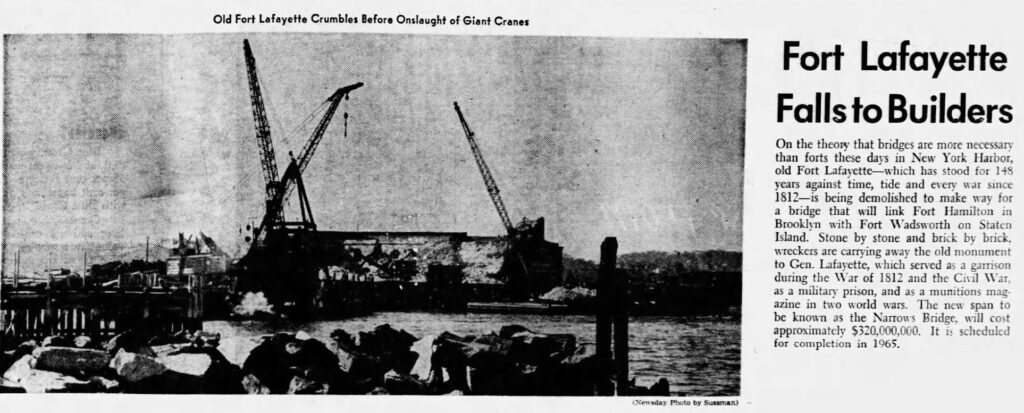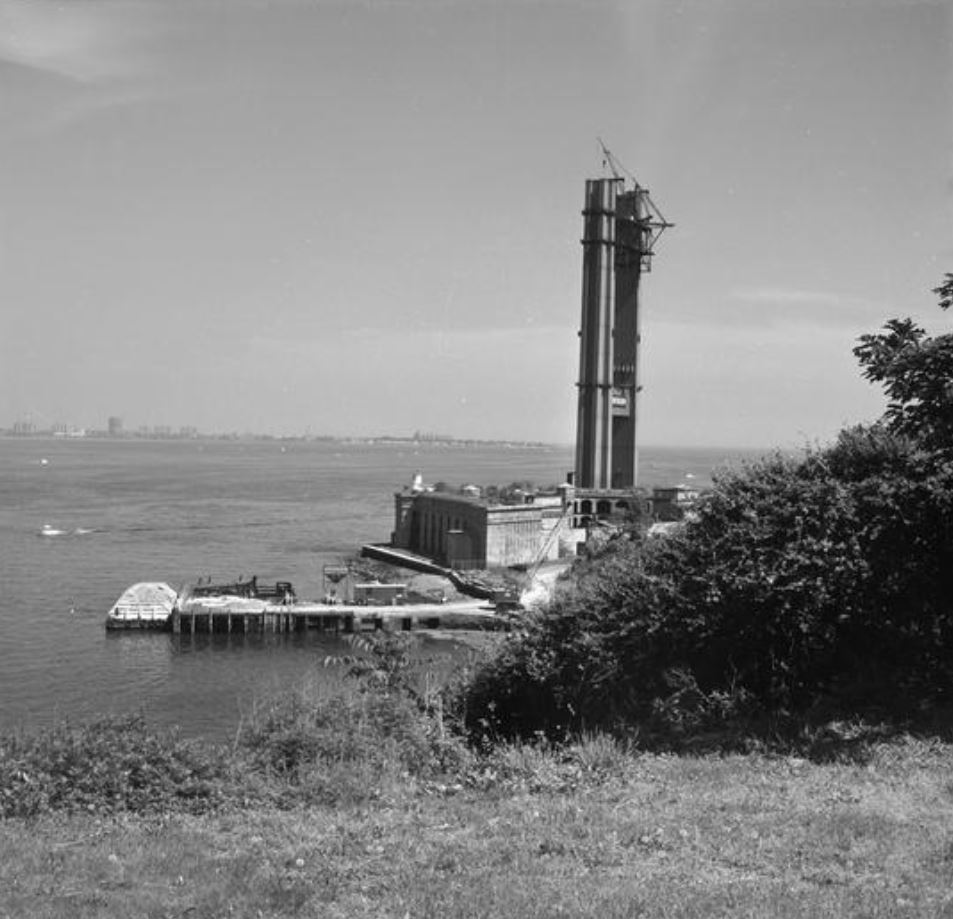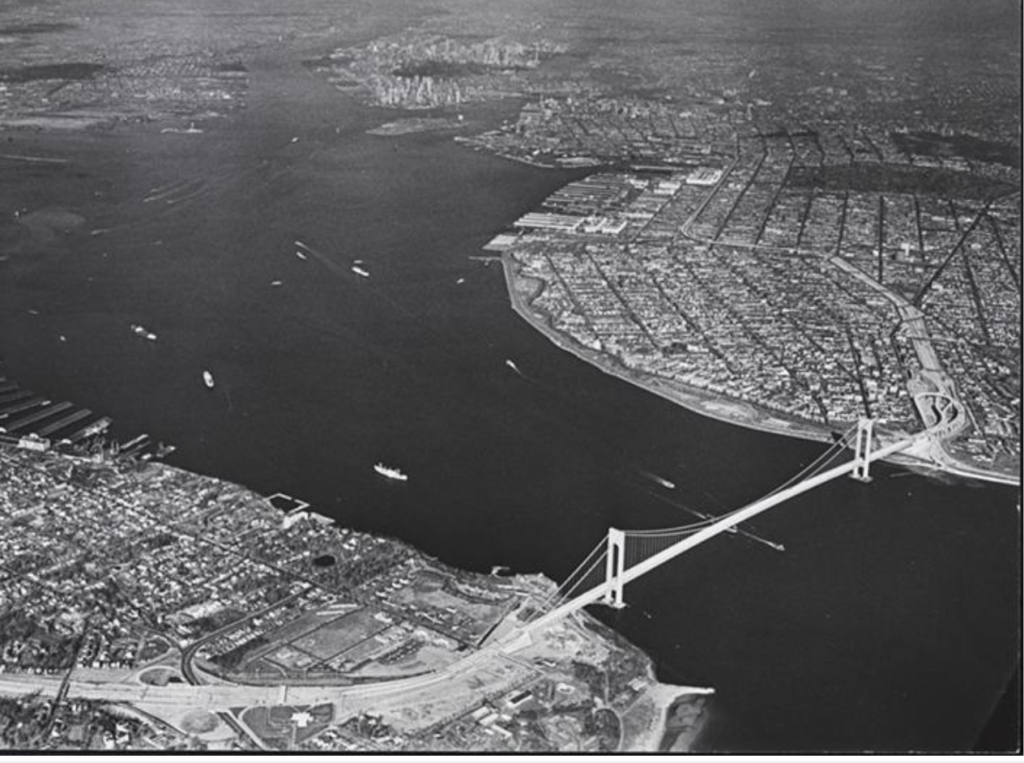
In my last three posts, I wrote about the Army cats of New York City’s Army Building on Whitehall Street, the black cat mascot of the New York Tank Corps, and the Army dogs, cats, and rabbits of Governors Island. This next story for Military Appreciation Month goes to a special naval mascot stationed at Fort Lafayette in the Narrows of New York Harbor.
Buster, a 67-pound wolf, arrived at Fort Lafayette in 1929. By 1932, he had made his 10,000 rowboat voyage from the island to Brooklyn and back again.
According to the Brooklyn Daily Eagle, Buster’s mother was killed during a hunt near Bear Mountain on the Hudson River. Gerald Powers, a second-class boatswain’s mate, found the baby wolf at the naval ammunition depot at Iona Island. He brought the tiny ball of orange-red fur to Fort Lafayette.
When Powers was assigned to the survey ship Hannibal, he could not take Buster along, so the wolf remained at Fort Lafayette.

One of Buster’s major jobs was to accompany the depot workboat about 11 times a day to the shore and back. A strong swimmer, sometimes Buster would swim back to the fort for extra exercise.
Buster’s other job was helping the Fort Lafayette cats keeps the rats at bay. He was reportedly a pretty good ratter, and he loved nothing more than picking up the kittens and carrying them off to a corner to play with them.
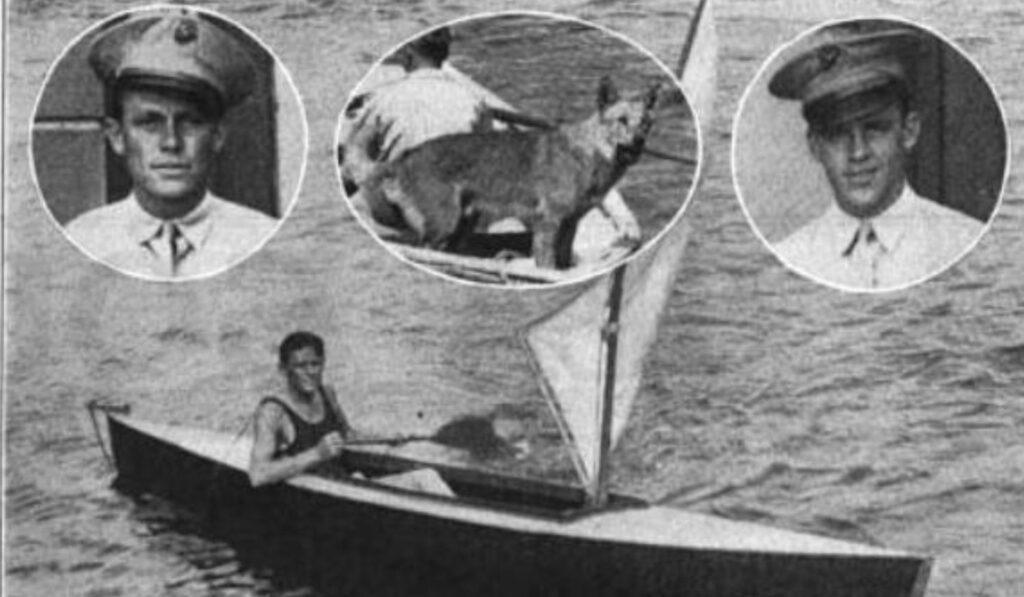
In addition to the cats, Buster had many human friends at Fort Lafayette. Chief Gunner F.T. Green, who was in charge of the island, adored the wolf, as did Sergeant Jack Davis of the marines. His other friends included Corporals Jacob L. Rau and Eugene H. Wilson and Privates Stanley Adkins, Nathan Brandt, Melvin H. Martin, Frederick Moan, Jay Mountjoy, William Marsh, William Thomas, and William E. Woodfield.
Not once did he ever harm any cats or humans at the depot.

A Brief History of Fort Lafayette
In 1805, Colonel Jonathan Williams, Chief of Army Engineers, was tasked with making a study of New York Harbor and submitting a plan for fortifying the city. His plan, published in 1807, called for two structures to protect the Narrows in New York Harbor: Fort Lafayette and Fort Richmond on Staten Island.

Construction on the fort began during the War of 1812 and was completed in 1822. Originally named Fort Diamond for the shape of the two-acre island–called Hendrick’s Reef–it was renamed in 1823 to celebrate the Marquis de La Fayette, a hero of the American Revolution.
During the Civil War, the island fort served as a prison, mostly for civilians and politicians viewed as disloyal to the Union. The prison had quite a civil reputation under the charge of Colonel Martin Burke, who reportedly allowed the prisoners to lead a rather carefree and festive life within the stone prison (they even held banquets for the prisoners).
Some historians reportedly theorize that the festive air at the prison was a carryover from a fancy ball that took place the night before the first prisoners arrived. Apparently, nobody bothered to take down the colorful bunting after dancing the night away within the fortress walls. As the merrymakers rowed off in their boats to return to the shore, the first batch of prisoners arrived.
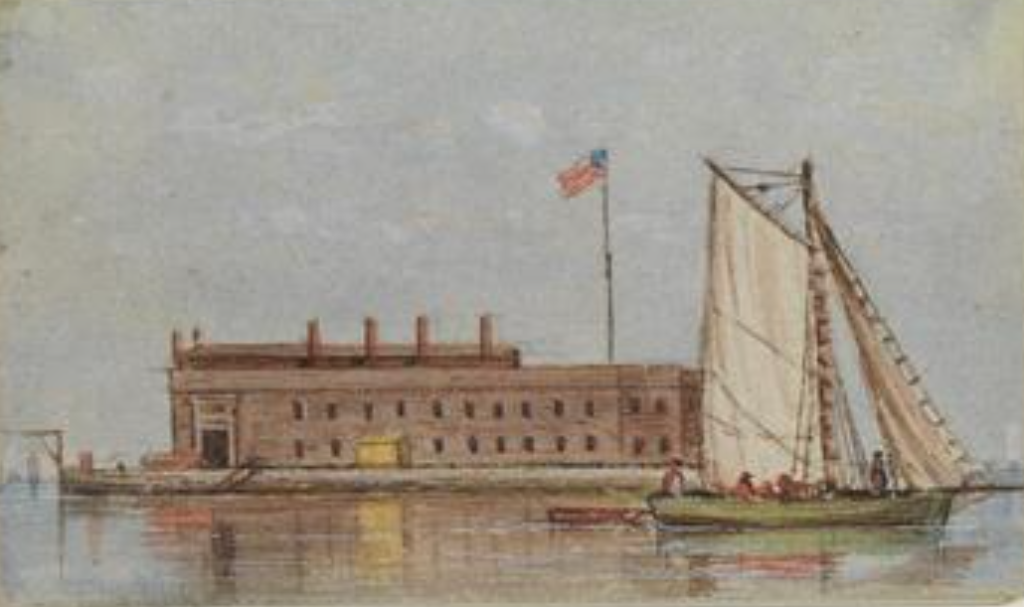
One of the fort’s most notable prisoners was Robert Cobb Kennedy, formerly a captain in the 1st Louisiana Regular Infantry. Kennedy was one of several Confederate conspirators who had plotted to burn down New York City on Thanksgiving Day of 1864 in retaliation for the burning of Atlanta. The only one caught, Kennedy was imprisoned, court-martialed, and hanged at Fort Lafayette on March 25, 1865.
Fort Lafayette was dismantled in 1868, its approximately 80 guns removed to other forts, including Fort Hamilton. The fort caught fire during roof repairs on December 1 of that year, and the building was left to decay. The fort was rebuilt, but for many years it served only as a storehouse.

From 1898 to 1946, the fort was used by the Navy for ammunition storage and transfer. It was during the later part of this era that Buster served as the Fort Lafayette mascot.
To thwart efforts to turn the fort into a night club or cover the island with unsightly docks, the city’s Park Department took it over in 1948. The city had no plans to use the fort; the purchase was “for protection” only.
The fort was demolished over a period of five weeks in 1960 to make way for the Verrazano-Narrows Bridge. The Brooklyn tower of the bridge was built upon the site of the old fortress.
